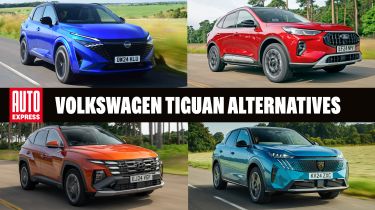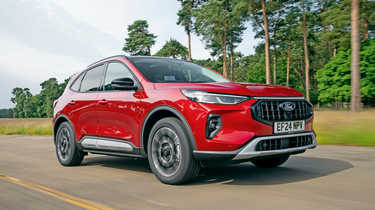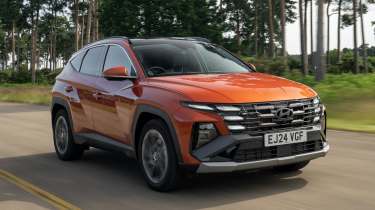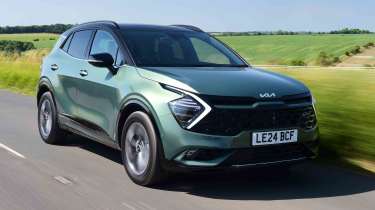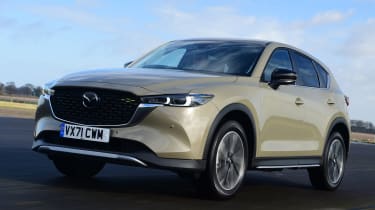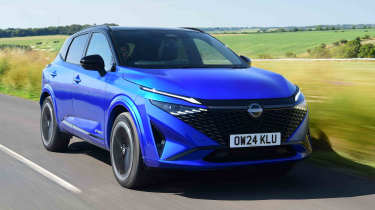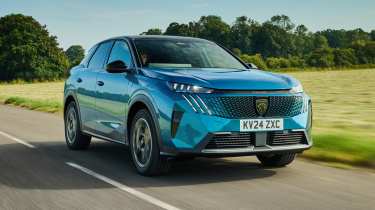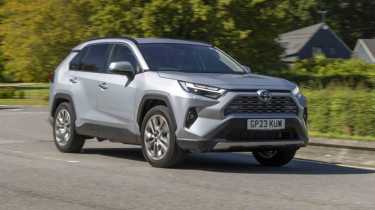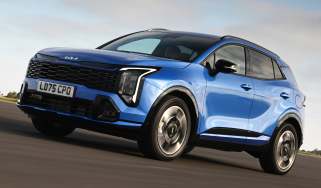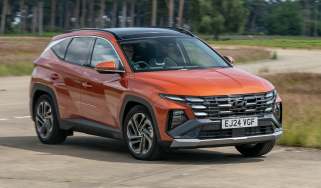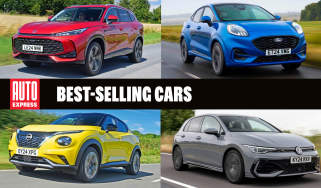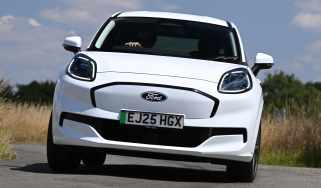Volkswagen Tiguan alternatives: 8 smart SUVs that are also worth a look
VW’s Tiguan is a fine all-rounder, but we’ve found eight other SUVs to match or beat it
The Volkswagen Tiguan is one of the default choices in the mid-size SUV class, a position it’s held for many years. It has the right badge on the front, which is always a good start – buyers still love the VW brand. But it’s also an accomplished all-rounder, being spacious and well-equipped, with a smart cabin design, a usefully broad engine range, and an easy-going driving experience.
That doesn’t mean you should stop your search at VW’s door though. This is a hugely competitive sector and the Tiguan’s rivals have plenty to offer too, from slick styling to even greater cabin space, and in some cases, the option of electric power. So we’ve gathered together eight models that are also worth considering – some of which are among the UK’s best-selling cars outright.
Ford Kuga
- Prices from £32,100
You’d be forgiven if you’d forgotten the Ford Kuga exists – most of the headlines, and probably Ford’s marketing budget, have gone towards electric SUVs like the Ford Explorer and Capri recently. But the Kuga remains a good all-round choice in the Tiguan’s class, with the usual Ford virtues like confident handling and a practical cabin.
You can get the Kuga in hybrid and plug-in hybrid flavours these days, in addition to a 1.5-litre Ecoboost petrol that kicks off the range with a £32,000 entry price. All feel brisk and the Kuga’s even quite fun to drive, though it does ride more firmly than a lot of cars in this class. It’s spacious, aided by a sliding rear bench that lets you choose between rear legroom and luggage – boot space varies from 412-645 litres, or a little less for the hybrids.
Hyundai Tucson
- Prices from £36,000
Hyundai’s Tiguan rival is named after a city in Arizona, but unlike that US state’s expanses of desert, there’s nothing barren about the Hyundai Tucson’s specification – it’s one of the better-equipped cars in this class and recent updates have given it a slick, modern cabin that apes those of Hyundai’s high-tech electric models.
It’s sharply-styled outside too, and instantly recognisable on the road thanks to its distinctive daytime running light arrangement in the grille. The range kicks off with a 1.6-litre turbocharged petrol version for just over £32,000, though the stars of the range are the hybrids, which offer near-50mpg economy. There’s a plug-in version too, though this is more than £39,000, into the realms of Hyundai’s talented fully electric cars, like the Ioniq 5.
Kia Sportage
- Prices from £29,900
The Kia Sportage was the UK’s second-best selling car in 2024 – so it must be doing something right. More than likely, UK buyers admired all the things in the Sportage that we do too: namely its spacious cabin, refinement, and well thought-out and feature-packed infotainment. Equally, they don’t seem to mind that the latest model’s styling isn’t the most cohesive you’ll ever see.
Another factor might be that it starts under the £30,000 mark, where most rivals begin a little higher than that, and of course Kia’s seven-year warranty is something you won’t find on most other cars either – there’s a lot to be said for peace of mind. Like the similar Hyundai Tucson above, the Kia’s range is made up of petrol, hybrid, and plug-in models, while the 587-litre boot in hybrid form is competitive with most rivals.
Mazda CX-5
- Prices from £31,100
Talented though the Tiguan is, it does blend into the background somewhat on the school run or in the supermarket car park. The same couldn’t be said for the Mazda CX-5, which is easily one of the more stylish SUVs in this class, especially if you follow the lead of a surprising number of Mazda buyers and opt for the £900 Soul Red Crystal paint finish, Mazda’s signature colour.
Looks aside, the CX-5’s other talents include a well-judged blend of ride and handling plus a cabin that wouldn’t look out of place among those produced by premium brands like Audi and BMW. There’s also a choice of petrol, mild hybrid and diesel powertrains, and front or all-wheel drive options. While the on-paper economy figures lag behind some rivals, the CX-5 is a better performer in real-world driving. Pricing starts at just over £31,000.
Nissan Qashqai
- Prices from £30,100
The Nissan Qashqai is one of the cars that kicked off this entire segment when the original model arrived in 2006, and now in its third generation, it’s still a car you should have on your shortlist if you’re in the market for a Volkswagen Tiguan. The current model, launched in 2021, still looks fresh, is still competitively priced (starting at a shade over £30,000) and unsurprisingly, remains a UK best-seller – third on the list in 2024, behind the Kia Sportage and smaller Ford Puma.
With a 504-litre boot you can’t cram quite as much kit into the Qashqai as the 652-litre Tiguan or several others here, but front and rear seat space is pretty good, with the usual caveat that the centre rear seat isn’t the best place to be thanks to a hump in the floor. Nissan alternatively offers the X-Trail if you need seven seats. Qasqhais are frugal too, thanks to a range of mild hybrid and hybrid powertrains, with up to 53.3mpg on offer.
Peugeot 3008
- Prices from £35,700
Like the Mazda CX-5 on this page, the Peugeot 3008 is another car that puts styling front and centre; some elements are more concept car than road car, and when you climb inside the show-car feeling is multiplied; this is a seriously striking cabin. High quality too, though it’s among an increasing number of cars putting a few too many features behind screens, rather than offering physical controls.
The 3008 comes in five-seater form (there’s a 5008 if you need seven spaces), and practicality, including a 588-litre boot, is among its best features. It’s easy-going to drive, especially in E-3008 electric form, but Peugeot’s push upmarket means pricing feels a little steep – upwards of £35,660, or nearly £46,000 in electric form.
Skoda Kodiaq
- Prices from £37,900
Skoda’s Kodiaq is essentially a Tiguan by another name. Underneath the subtle styling differences they’re largely the same car, though there’s greater differentiation in their cabin designs. Which you prefer will be a personal thing, but while the Skoda gets the same large 13-inch touchscreen as its VW counterpart, the Czech brand also gives you physical climate controls, which feels like a significant usability improvement.
The Skoda is notably a touch larger than the Tiguan though, as some variants offer seven seats – you have to step up to the Tayron in VW’s range for that. The Tiguan is a little cheaper, at just over £35k to the Skoda’s £38k, but for the extra, the Skoda’s boot is absolutely enormous: 910 litres in the five-seater, 845 litres in the seven-seater in five-seat mode. The third row in the seven-seater is definitely kids-only, but that’s okay.
Toyota RAV4
- Prices from £44,200
If the Nissan Qashqai was the car that showed cars that blended SUV styling with car-like dynamics could be hugely popular, then the Toyota RAV4 was the prototype for the segment. It’s now in its fifth generation since 1994, a good couple of generations ahead of the rest here, and is a strong-seller across the world on account of its longevity, build quality, and low running costs.
The latter comes courtesy of hybrid power these days - another thing Toyota got into well before most other companies. Now the only variant on sale, the plug-in hybrid gets a 46-mile EV range and combined (if not real-world) economy of more than 282mpg. The cabin layout is intuitive and feels solid, and it’s spacious too – even if its 580-litre boot can’t quite match that of the Tiguan. Pricing of £44k and up is more than most others here, but the RAV4 holds its value well too.
Now you can buy a car through our network of top dealers around the UK. Search for the latest deals…

